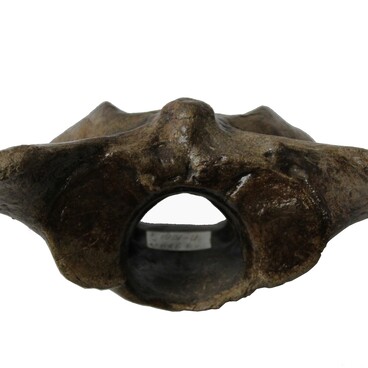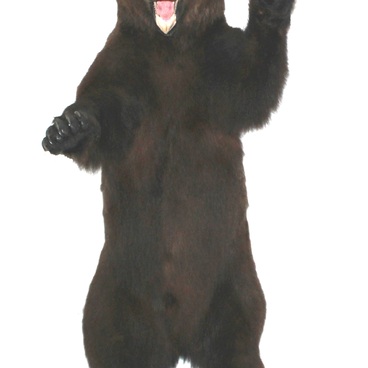Moose are the largest animals found in the Samara Region. In the past, they were very common in the forests along the Bolshoy Irgiz and Samara rivers. Later, due to deforestation and predatory hunting, the numbers of these animals dropped radically everywhere. However, a blanket ban on hunting and protection measures have brought about consistent growth in the local moose population.
A male moose can have a body of up to 3 meters in length and stand as high as 2.3 meters on four legs, the body weighs between 300 and 600 kg. Females generally tend to be somewhat smaller than males. Moose look very distinct from other representatives of the deer family. They have short bodies and short necks while the back is high and hunched. A moose has very long legs so it has to wade very deep in the water or stand on the knees of the front legs to drink. Males grow huge shovel-like antlers: they can be a large as 180 cm across, weighing up to 20-30 kg. Every year in November-December, they shed their antlers with new ones beginning to grow only in April-May.
Moose are very common in the forests of the northern hemisphere, they are not as common in forest-steppes and around the edges of the steppes. In Russia, there are about 730,000 moose, which is about half their total population worldwide. Swamps, bogs, slow-flowing rivers, and lakes are very important for moose as they eat aquatic vegetation and use those bodies of water to escape from the heat. In winter, moose need mixed and conifer forests with a dense underbush. In extremely cold sub-zero weather a moose will lie in the loose snow so that only the head and the top of the back are showing: this helps them reduce heat loss.
Moose feed on tree bark, twigs, bushes, and grass, as well as on moss, lichen, and mushrooms. Everywhere these animals are drawn to salt licks, often even licking salt off highways. The moose can run fast and speed up to 56 km/hour. It is also a fair swimmer. In search of plants, they can hold their head underwater for more than a minute.
Moose are hunted by wolves and bears: it is normally young, sick, or old animals that fall prey to these carnivores. When a predator attacks, a moose will try and kick it with its front legs. The most developed senses are hearing and smell, eyesight is rather weak - a moose can’t spot a human standing 10 meters distant unless the human moves. Moose hardly ever attack humans first, only if a human tries to approach baby moose or if there are some irritating factors at play.
A male moose can have a body of up to 3 meters in length and stand as high as 2.3 meters on four legs, the body weighs between 300 and 600 kg. Females generally tend to be somewhat smaller than males. Moose look very distinct from other representatives of the deer family. They have short bodies and short necks while the back is high and hunched. A moose has very long legs so it has to wade very deep in the water or stand on the knees of the front legs to drink. Males grow huge shovel-like antlers: they can be a large as 180 cm across, weighing up to 20-30 kg. Every year in November-December, they shed their antlers with new ones beginning to grow only in April-May.
Moose are very common in the forests of the northern hemisphere, they are not as common in forest-steppes and around the edges of the steppes. In Russia, there are about 730,000 moose, which is about half their total population worldwide. Swamps, bogs, slow-flowing rivers, and lakes are very important for moose as they eat aquatic vegetation and use those bodies of water to escape from the heat. In winter, moose need mixed and conifer forests with a dense underbush. In extremely cold sub-zero weather a moose will lie in the loose snow so that only the head and the top of the back are showing: this helps them reduce heat loss.
Moose feed on tree bark, twigs, bushes, and grass, as well as on moss, lichen, and mushrooms. Everywhere these animals are drawn to salt licks, often even licking salt off highways. The moose can run fast and speed up to 56 km/hour. It is also a fair swimmer. In search of plants, they can hold their head underwater for more than a minute.
Moose are hunted by wolves and bears: it is normally young, sick, or old animals that fall prey to these carnivores. When a predator attacks, a moose will try and kick it with its front legs. The most developed senses are hearing and smell, eyesight is rather weak - a moose can’t spot a human standing 10 meters distant unless the human moves. Moose hardly ever attack humans first, only if a human tries to approach baby moose or if there are some irritating factors at play.

